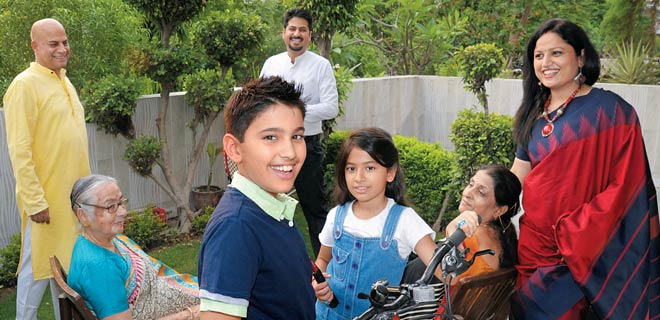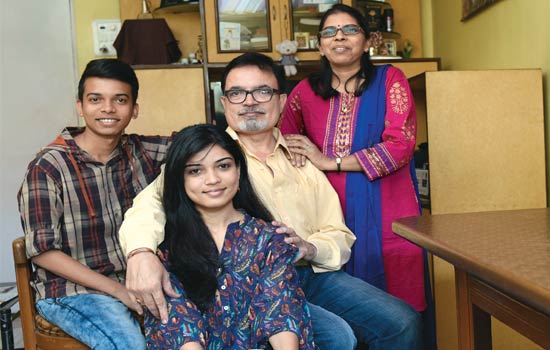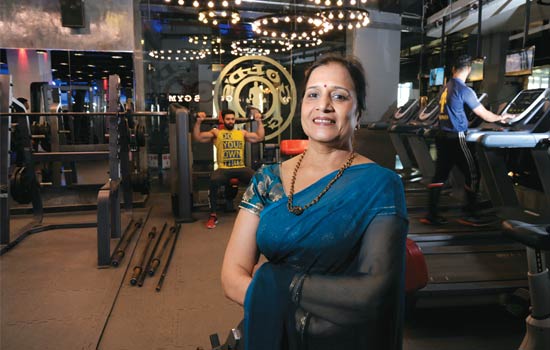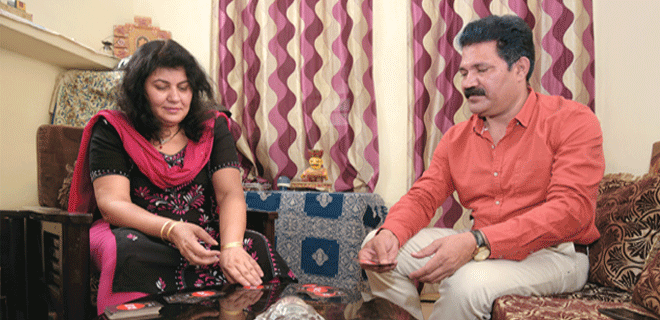Homing in The Home Stretch
Make the right financial decisions as you approach retirement

By the time you are in your 50s, chances are that you will be wondering about your looming retirement. A common cause of concern is—do I have enough to retire? The other situation that is becoming common these days is of being sandwiched between managing monies for multiple generations—yourself, your children and your ageing parents. The upside to all of these anxieties is also the fact that you are at the peak of your earning power and chances are you would have retired your debts or would be in the last leg of repaying it.
There are certain other advantages; unlike the early years in employment, by now you are more likely to have a stable lifestyle to have an assessment of the expenses that you need to manage in your retirement. So, unlike a 30-year-old, who visualises retirement as something that will happen two decades later, you have a better handle on when you will retire and the kind of income stream you will need to maintain your lifestyle in retirement. But in reality most people are way off the mark as compared to what they will actually need in retirement because of a false sense of belief that what they have is enough to see them through retirement.
“When it comes to life goals like house or children’s education and marriage, one tends to act because there is pressure from family to work on these. But there is no such pressure to plan for retirement,” explains B. Srinivasan, director—Shree Sidvin Financial Services & Investments. The mandatory contribution to PF is something that drives people to at least have some monies being allocated towards retirement. For anything outside this component, there is little that is encouraging for people to park towards retirement.
“As a joint family, we have had an early exposure about the need to plan for retirement,” says 40-year-old, Faridabad-based Sonia Tickoo. The Tickoo family has Sonia’s husband Vicky, their two children Akshit (11) and Ishita (8) and three senior citizens—69-year-old Vijay Tickoo, his 65-year-old wife Vimla and Vijay’s mother, Rupa (86). Although retired, Vijay draws a pension from the government of India and also dabbles in shares to supplement his income, while the younger generation has invested in both physical and financial assets. Interestingly, octogenarian Rupa also draws a pension, thereby making it a total of four earning members in the house of seven.
Playing catch up
Whatever your contributions, now is the time to maximise it for a better retirement. “In India, the vast majority of elderly are still dependent on their children,” stresses Sapna Narang, managing partner, Capital League. While there are instances of senior citizens living on their own, but a majority still have a family cushion which is doubtful in the years to come.
Lack of awareness cannot be an excuse. “Most people wrongly think that post retirement they have to play safe and thus invest their retirement corpus in bank FDs or post office schemes. Unfortunately, over a long period of time, inflation outstrips the interest income. The focus needs to be on protecting the ‘purchasing power’ of their capital and not just on protecting capital,” adds Narang. While the impact of inflation is being felt across generations over the past decade, its implications on one’s retirement are yet to sink in well.
 “There are so many pressing financial needs; you have to strike a balance for all of it to come true and also have money to retire,” says Mumbai-based Mandar Bhatt (53). As the only earning member in a family of four, his is a typical Indian household where needs always outweigh resources. Yet, with deft planning, he has a plan for his retirement.
“There are so many pressing financial needs; you have to strike a balance for all of it to come true and also have money to retire,” says Mumbai-based Mandar Bhatt (53). As the only earning member in a family of four, his is a typical Indian household where needs always outweigh resources. Yet, with deft planning, he has a plan for his retirement.
“When we talk to our clients we tell them how it is to be in a job where the salary remains the same year after year. Thus we explain the impact of inflation and how it is important to build an inflation-adjusted corpus,” adds Srinivasan. As you are more likely to be free from responsibilities of savings for children and squaring off your debts, use the additional to add to your retirement corpus.
“In their early 50s, an individual should roughly have an equal allocation to equity and debt asset classes. Within equities, he should start an SIP programme of a tenure equal to his balance working life—till his retirement age,” recommends Sunil Subramaniam, CEO, Sundaram AMC. The allocation to equity could be higher, even though there is a higher risk of doing so. To catch up, you will actually need to contribute higher proportion of your savings towards equities. The reason for viewing a higher allocation to equity is also because of the fact that you will have a longer life in retirement.
“Equities are known for convincingly beating inflation over the long run. Research data indicates that the returns of the CRISILAMFI Equity Fund Index (a representative index of equity funds) over a 5- to 15-year period outperform against equity benchmarks,” according to Harshendu Bindal, president, Franklin Templeton Investments—India. The average 14 per cent tax free returns from equities over a 7-10-year time period easily beats the returns from fixed return instruments. “Equity funds also offer efficiencies like tax-free dividends, with longterm capital gains tax after a 12-month holding period being nil,” adds Bindal.
House in order
In your quest to catch-up on retirement savings, do not forget to maintain your health and asset insurance. This is also a good time to move your retirement savings into instruments which will be income generating by the time you retire. “Annuity products can be an effective means of distribution of wealth and there are various options available. Depending upon one’s need, an annuity option can be chosen. Annuity rates are guaranteed and hence act as a stable source of income for life,” says Sujoy Manna, VP— products, HDFC Life Insurance.
“We have invested in a couple of houses in Gurgaon and Mohali. The idea is to build assets which will generate income by way of rents later,” says Vicky Tickoo. He is not alone; several people have two homes so that they can use one of them when they retire, even as the second house pays regular rental income. “I love Mohali and bought the house with a plan to settle there when I retire,” adds Vicky.
Today, creating a retirement income stream that matches your needs in retirement is a big challenge. While there are several options when it comes to building a retirement corpus—FDs, PF, PPF, mutual funds and investment-linked insurance—there are few welldefined products when it comes to payout. Even in case of a well-constructed corpus, there is always the worry of how much to withdraw so that there is money left for long periods. “Even if one has a large enough corpus, the withdrawals too must be wellplanned and tax-efficient. Mutual funds offer the convenience of Systematic Withdrawal Plans (SWP) wherein one can withdraw a defined sum every month while the rest of the corpus stays invested,” says Bindal.
There is a different kind of situation that Indians face—they own more real assets than financial assets. The propensity to own real estate, gold and jewellery is a lot higher than money invested in equities. “If someone is very late in planning for retirement, they should be willing to convert real assets into cash,” explains Srinivasan. “One could also sell off a large house. Even though they might want to leave such assets to their children, but in this case they should not hesitate to use them for their retirement goals,” he adds.
This is also a good time to create a Will. Although most financial instruments come with an in-built nomination mechanism these days, Will-making has got easier. “The EzeeWill portal provides end-to-end solutions for succession planning, catering to the specific needs of the end user,” explains Milind Mungale, senior VP, NSDL eGov. There is a wide range of services on offer—and one can get a will made for as low as Rs 4,000.
Giving wings to dreams
These days a lot of people are forced to work after retirement. However some love to work. But by working longer, you can actually catch up because a few more years into their sixties will only mean a better retirement fund. “I was a homemaker for about 28 years but four years ago, after I completed my education, I wanted to start a business with my son. We got into starting Gold’s Gym in Gurgaon,” recounts 57-year-old Gurgaon resident Poonam Gupta.

She was lucky to have the backing of her businessman husband who loaned her Rs 2 crore in 2012 to pursue her dreams. “Within two years we opened another branch, in which I invested Rs 3.5 crore on my own without any help,” she says. The number of people who are exploring ventures on their own in their 50s is becoming fairly common. There is also a significant increase in the number of people moving from the government sector to private sector to explore better pastures.
Even though retirement may be looming closer, we live in times when one may have many years in retirement to live. Yes, it is complicated to have clear answers to how much you will actually need to retire comfortably. However,that should not be the cause of concern for you to look forward to your retirement after all those years of working and realising the many financial goals that you had over the years. If they have all materialised, chances are your retirement will also sail through. In your essential checklist to be retirement ready—add health insurance at all times, keep some liquid money to meet emergencies and do not shirk away from equities to maintain your lifestyle. By being flexible about when you actually retire, you give yourself a purpose to make retirement without any worry and tension.









